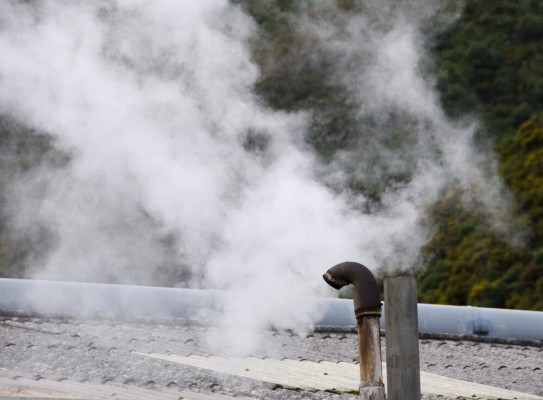High arsenic levels in urban air a health hazard, study shows

Air monitoring work by GNS Science has found that atmospheric concentrations of arsenic, a known carcinogen, are above national and international guidelines in a number of New Zealand urban centres.
The main source of the elevated levels is the burning of treated timber in domestic fires and, consequently, the highest atmospheric levels are occurring in winter.
In some cases, atmospheric concentrations have reached twice the upper guideline for human health.
The studies suggest that sufficient quantities of timber treated with copper-chrome-arsenic are being burnt to potentially cause acute or chronic illness in sections of the population.
The most likely source of the treated timber is off-cuts from renovations and demolitions. The peaks don’t always correspond with the coldest weather, suggesting some of the burning is opportunistic.
“These findings show that air in New Zealand urban centres is not as clean as we would like to think,” said study leader Perry Davy of GNS Science.
“In fact some of the winter measurements are more like the air we expect to encounter in polluted overseas cities,” Dr Davy said.

A further issue was the disposal of domestic fire ash that contained residual arsenic, copper and chromium. When ash is placed on gardens, it represents an additional exposure pathway through the consumption of vegetables grown in contaminated soils.
The highest average concentrations of arsenic detected so far were at Wainuiomata, Hastings, and Henderson in Auckland. Other centres showing elevated levels for briefer periods were at Nelson, Masterton, other Auckland locations.
Councils are responsible for the management of air quality and most councils ban the burning of CCA-treated timber.
Several councils have embarked on enforcement and community education programmes, but these results show there is more work to do in this area.
The data was gathered from air quality monitoring stations in urban centres that collect tiny airborne particles for analysis.
Particles that are 10 microns in diameter or smaller are seen as a health hazard as they can get past the body’s defences and cause multiple health issues when they settle in the lungs. Larger particles readily settle out of the air and are less of a threat.
Researchers at GNS Science’s National Isotope Centre in Lower Hutt analyse the particles collected at the monitoring stations by passing a beam of atomic ions through them. This shows the elements present in the samples and this enables scientists to deduce the likely source they came from.
Typical sources are motor vehicle emissions, wood fires used for home-heating, sea salt, wind-blown soil, and road dust mixed with metals from brake abrasion and other mechanical wear. Winter arsenic levels, the product of burning wood, were conspicuous in most urban centres.
The measurements, which have been undertaken almost continuously for about a decade, have even picked up atmospheric pollutants from dust storms and summer bushfires in Australia.
Since 1998 GNS Science has analysed about 40,000 air samples from monitoring stations around New Zealand.
Councils pay for the analysis and interpretation reports. Dr Davy said his team hoped to continue the analysis to show long-term trends, particularly the impact of education and enforcement programmes designed to reduce air pollution.